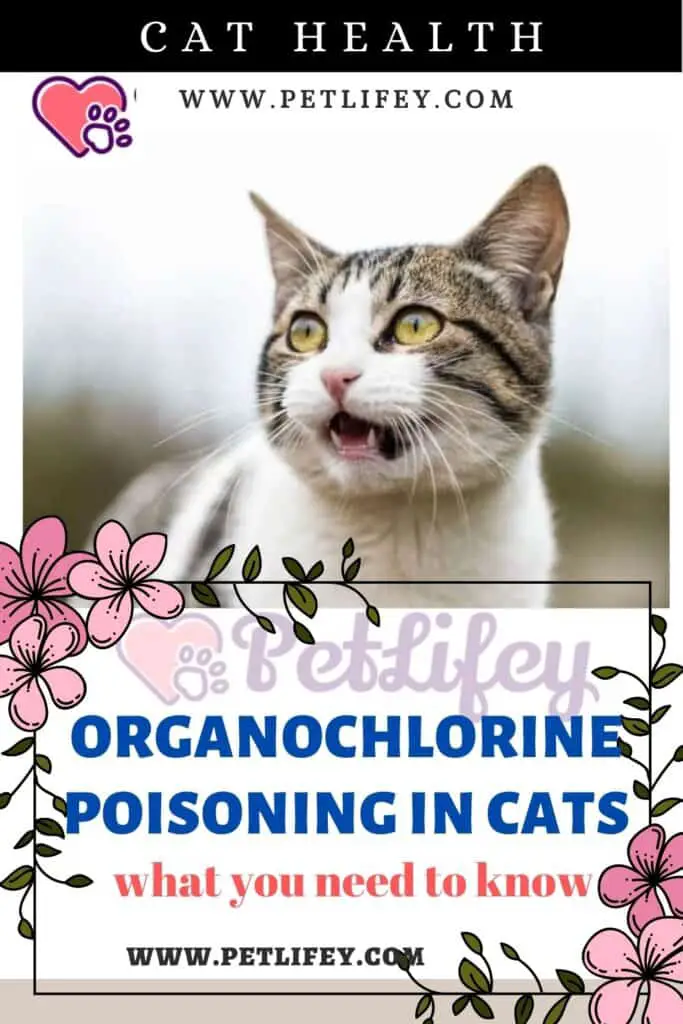Organochlorine poisoning in cats, always a possible danger. Let’s try to understand what can cause it, what symptoms occur and what is the suitable treatment.

Taking care of the health of your domestic cat is a real mission. Every day the cat can put itself in danger or run the risk of having accidents, getting sick, intoxicating and even poisoning itself. There are few outdoor environments that are absolutely safe for him and both inside and outside the home, prudence is never too much. Today, for example, we talk about poisoning as organochlorines in the cat and its treatment.
Organochlorine poisoning in cats: causes and symptoms
It is a problem that can affect many cats and it is necessary to know the consequences of this unfortunate feline accident, identifying the causes of the poisoning and carefully observing the symptoms that occur. Let’s see better here in the article.
It is not always possible for us to follow and protect our domestic feline. All too often the furry person can fall victim to domestic accidents and external realities that are dangerous for his safety. When you don’t have full control over him, always be ready to notice the slightest sudden change in his behavior.
Feline poisoning is a fairly common problem that should not be underestimated. By organochlorines we mean very powerful insecticides such as lindane and endosulfan, which managed to persist in the environment for many hours, which were often used in the past. Today, with new knowledge, they are used very little.
Organochlorines are divided into three categories: chlorinated hydrocarbons, including lindane, mirex, chlordecane and alpha-BHC; DDT , i.e. bulan, prelan, methoxychlor and dicfol; finally, the cyclodienes , such as chlordane, endosulfan, entrances and dihedrals.
These insecticides are little used, so the organochlorine poisoning in cats can occur due to old waste of storage used by inexperienced people. These substances, therefore, are quickly absorbed orally and locally by the feline.
Once absorbed, they spread to the tissues, then to the fat, liver, kidneys and nervous system. The venom acts, in fact, on the central and peripheral areas of the feline nervous system, causing fasciculation and tremor. This distribution of the poison in the tissues is very dangerous, as it risks being trapped in the fat and it will take time to eliminate it.
Intoxication and symptoms of poisoning in the cat
At first, the cat goes through a fairly long phase of intoxication, lasting 4-5 hours. After this first phase, symptoms and behavioural signs appear in him such as:
- Tremors
- Arrhythmias
- Collating
- Fear in the cat
- The cat is aggressive
- Spasms
- Myoclonia
- Increased body temperature
- Bronchial secretion
- Dyspnea in the cat
- Difficulty in movement
- Falls, turns on one leg, rolling on the back
- Depression
- Seizures cat
- Coma;
- Respiratory failure and consequent death of the animal
When the toxic substance is released, additional symptoms occur in the cat, typical of chronic intoxication, such as excessive weight loss , anorexia in the cat , testicular atrophy or an irregular oestrus cycle.
The feline and poisoning: the right therapy

As we have seen, there are various signs and symptoms that we must look out for for a suspected organochlorine poisoning in the furry cat. Once the intoxication in the animal has been confirmed, it is necessary to proceed with the appropriate therapy for the situation. But what does the therapy consist of? Let’s read more later.
It is good to know immediately that, unfortunately, there is no real cure for the intoxicated cat and this will also be confirmed by the veterinarian you are contacting. You can intervene in two ways.
If the poisoning has occurred in the cat for via oral, it should be administered, within 4 hours after ingestion of the poison, mineral oil or coal active. If, however, the absorption takes place for dermal , it is absolutely necessary to wash well the hairy with warm water and using soap, wear gloves and shearing the hair.
The cat should then be placed in a quiet and peaceful environment to help calm down likely spasms and convulsions. It will be necessary to put the feline on a diet, since by losing weight it will be able to get rid of the toxic fat and clean up its organism.






